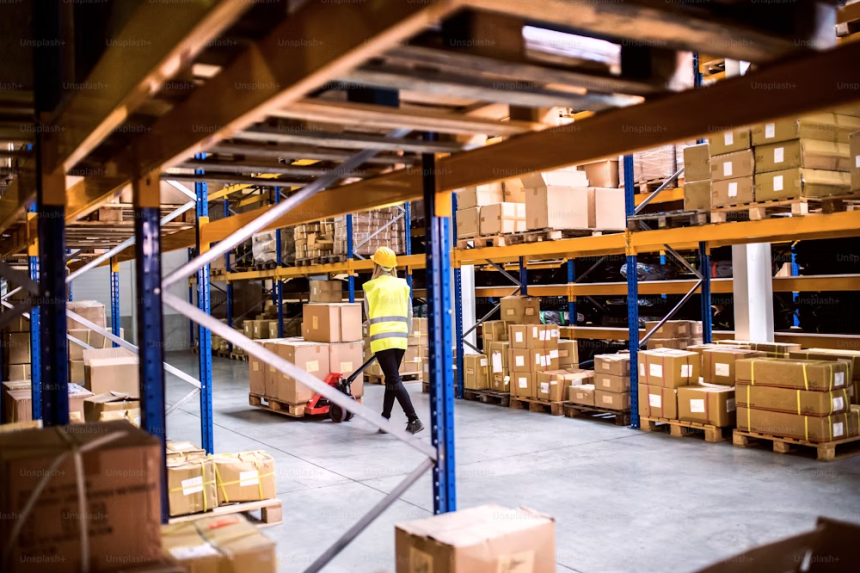Table of Content
Try Vizitor for Free!

Tue, May 21, 2024
Read in 7 minutes
Rahul: Bhai, have you noticed how our office has changed lately? It’s like everything’s suddenly become so much smarter!
Sohail: Oh Yes! Just few days ago, the IT team installed a new smart workplace system. India ban raha hai Digital!
Rahul: Exactly! I heard that smart workplace tech is making a big impact across Indian companies. You know, like improving productivity and all.
Did you know that smart workplace technology is revolutionizing how businesses operate, boosting productivity, efficiency, and employee satisfaction? In today’s fast-paced digital age, organizations are embracing smart technologies to create dynamic work environments that foster innovation and collaboration.
According to a study by Grand View Research, the global smart workplace market size is expected to reach $58.5 billion by 2028, growing at a CAGR of 13.4% from 2021 to 2028.
Imagine a smart office where employees can seamlessly book meeting rooms through a mobile app, control the lighting and temperature in their workspace, and collaborate in real time with colleagues across the globe through virtual meeting platforms.
Companies like Google and Microsoft are leading the way with innovative workplace solutions such as smart sensors that optimize energy usage, AI-driven analytics for workspace optimization, and augmented reality tools for remote collaboration.
The International Data Corporation (IDC) predicts that by 2025, 75% of the workforce will be mobile, and 45% of all enterprise employees will work from home at least part-time.
In this blog, we’ll delve deeper into the benefits of smart workplace technology, explore real-world examples of its implementation, and discuss how businesses can leverage these advancements to create more agile, connected, and productive work environments. Stay tuned for insights on how smart workplace technology is reshaping the future of work!
What is a Smart Workplace?
A smart workplace refers to an environment where technology is leveraged to enhance productivity, collaboration, and efficiency while improving the overall employee experience. It encompasses a range of interconnected technologies and solutions that transform traditional workspaces into intelligent, data-driven ecosystems.
A report by MarketsandMarkets estimates that the global smart workplace market size will grow from $20.7 billion in 2021 to $46.7 billion by 2026, at a CAGR of 17.4%.
Key Technologies in a Smart Workplace
Let’s see what cool stuff makes a smart workplace tick! Imagine sensors keeping an eye on how we use space or AI helping save energy. These tech wonders are changing how businesses and teams work together. Let’s dive into what makes smart workplaces so awesome and how these technologies are shaping the future of work.
1. Internet of Things (IoT) Sensors
IoT sensors are fundamental in a smart workplace, collecting data on occupancy, temperature, humidity, air quality, and more. This data helps optimize energy usage, space utilization, and employee comfort.
2. Collaboration Platforms
Tools like Microsoft Teams, Slack, and Zoom facilitate seamless communication and collaboration among remote and on-site teams. Video conferencing, chat, file sharing, and project management features enhance productivity and teamwork.
3. Artificial Intelligence (AI) and Machine Learning (ML)
AI-driven analytics analyze workplace data to provide insights into employee behaviour, space utilization patterns, and workflow optimization. ML algorithms can automate routine tasks, improve decision-making, and enhance operational efficiency.
4. Smart Access Control
Technologies such as RFID badges, biometric scanners, and mobile access apps provide secure and convenient access to office spaces. They also enable flexible working arrangements and enhance security measures.
5. Workspace Management Systems
Software solutions for desk booking, room scheduling, and resource allocation streamline workplace logistics. Employees can reserve spaces based on their needs, fostering a flexible and agile work environment.
6. Augmented Reality (AR) and Virtual Reality (VR)
AR and VR technologies enhance remote collaboration and training. They allow employees to interact with virtual environments, attend virtual meetings, and participate in immersive learning experiences.
7. Energy Management Systems
Smart building technologies monitor and control energy consumption, lighting, HVAC systems, and other utilities. Energy-efficient practices reduce costs, minimize environmental impact, and create sustainable workplaces.
8. Wearable Devices
Wearables like smartwatches and fitness trackers promote employee health and well-being. They track physical activity, monitor stress levels, and encourage healthy habits, contributing to a more productive workforce.
9. Data Analytics and Visualization Tools
Advanced analytics tools process large volumes of data to extract actionable insights. Data visualization techniques present information in a user-friendly format, enabling informed decision-making and strategic planning.
10. Cybersecurity Solutions
Robust cybersecurity measures protect sensitive data, networks, and devices in a smart workplace. Firewalls, encryption, multi-factor authentication, and security protocols safeguard against cyber threats and data breaches.
Challenges and Considerations
While smart workplace technology offers numerous benefits, organizations must navigate challenges such as data security and privacy concerns, initial investment costs, ensuring compatibility among diverse technologies, and managing employee resistance to change. Overcoming these challenges requires a strategic approach and proactive planning.
1. Integration Complexity
One of the major challenges is integrating diverse smart technologies into existing infrastructure seamlessly. Ensuring compatibility, data interoperability, and smooth communication between different systems requires careful planning and coordination.
2. Data Privacy and Security
With the increased connectivity of devices and systems, data privacy and security become paramount. Protecting sensitive information, implementing robust cybersecurity measures, and complying with data regulations (such as GDPR or CCPA) are critical considerations.
3. Employee Training and Adoption
Introducing new technologies requires training employees to use them effectively. Resistance to change, lack of digital skills, and varying adoption rates among employees can hinder the successful implementation and utilization of smart workplace technologies.
4. Scalability and Flexibility
As businesses evolve, scalability and flexibility are essential. Smart technologies should be scalable to accommodate growth and adaptable to changing business needs without significant disruptions or costly upgrades.
5. Cost Management
Investing in smart workplace technologies involves upfront costs for equipment, software, and implementation. Managing expenses, optimizing ROI, and balancing technology investments with business priorities are key considerations.
6. Infrastructure Reliability
Reliability and uptime of infrastructure components, such as networks, servers, and IoT devices, are critical for uninterrupted operation. Implementing redundancy, backup systems, and disaster recovery plans mitigate risks of system failures and downtime.
7. User Experience and Accessibility
Designing user-friendly interfaces, intuitive workflows, and accessible technologies ensures a positive user experience. Considering diverse user needs, preferences, and accessibility requirements enhances adoption and usability.
8. Regulatory Compliance
Adhering to industry regulations, standards, and compliance requirements is essential. Addressing the legal, ethical, and regulatory implications of smart technologies, such as data protection, privacy policies, and environmental regulations, is crucial for compliance.
9. Sustainability and Environmental Impact
Smart workplace initiatives should consider environmental sustainability. Optimizing energy efficiency, reducing carbon footprint, and adopting eco-friendly practices align with corporate sustainability goals and societal expectations.
10. Vendor Selection and Partnerships
Choosing reliable vendors, establishing strategic partnerships, and maintaining vendor relationships are vital. Evaluating vendors based on expertise, reputation, support services, and long-term viability ensures successful technology deployment and ongoing support.
Future Trends in Smart Workplace Technology
The future of smart workplaces is poised for exciting developments, including advancements in AI-driven automation, the integration of 5G and edge computing for real-time connectivity, and the emergence of personalized workplace experiences tailored to individual preferences. Let’s check out more.
1. Edge Computing
Edge computing, which processes data closer to the source rather than in centralized data centers, will gain prominence. This reduces latency, improves data processing speed, and supports real-time applications in smart workplaces.
2. 5G Connectivity
The rollout of 5G networks will revolutionize connectivity in smart workplaces, offering high-speed, low-latency communications. This enables seamless integration of IoT devices, augmented reality (AR), virtual reality (VR), and real-time collaboration tools.
3. Digital Twins
Digital twins, virtual replicas of physical assets, processes, or systems, will be utilized for simulation, monitoring, and optimization in smart workplaces. They enable predictive maintenance, scenario analysis, and data-driven decision-making.
4. Human-Centric Design
Designing workplaces with a focus on human-centric principles, employee well-being, and user experience will be a key trend. Flexible workspaces, ergonomic designs, wellness programs, and inclusive technologies enhance employee satisfaction and productivity.
5. Cybersecurity Innovations
With the growing complexity of smart workplace ecosystems, cybersecurity innovations will focus on advanced threat detection, zero-trust security models, identity and access management (IAM), and secure-by-design principles to safeguard digital assets and data.
Wrapping it Up
Vizitor can make your office smarter and better. It uses new technology to help manage visitors, make security better, and make your workspace run smoothly. It has things like touchless check-in, instant alerts, digital badges, and data analysis to make visitor registration easier and improve how your office works.
Also, Vizitor can connect with other devices like IoT, security systems, and tools for working together. This helps everything in your office work together better and helps you use resources well. Using Vizitor can make your office more modern, make your employees happier, and help your business grow in the digital age.
Make your office smart with Vizitor and get ready for the future of work!










